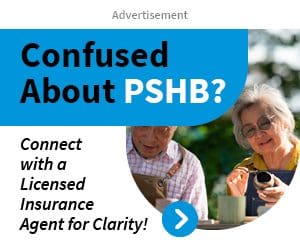Key Takeaways
-
Enrolling in Medicare is a key requirement for many Postal Service Health Benefits (PSHB) plan options in 2025, impacting your eligibility and coverage details.
-
Understanding Medicare’s integration with PSHB ensures you maximize your healthcare benefits while minimizing out-of-pocket costs.
Why Medicare Enrollment Matters for PSHB Plans
If you’re a Postal Service employee or retiree, 2025 marks a significant shift in how your health coverage works under the PSHB program. One of the biggest changes? The integration of Medicare, particularly Part B, into many PSHB plans. This means that for most Medicare-eligible annuitants and family members, enrollment in Medicare Part B isn’t just beneficial—it’s required to maintain your PSHB coverage.
Failing to enroll in Medicare could lead to higher costs or reduced benefits, so understanding this connection is crucial. Let’s dive into what you need to know and how to navigate these changes.
The PSHB Program: What’s New in 2025
The Postal Service Health Benefits program replaced the Federal Employees Health Benefits (FEHB) system for USPS employees, retirees, and their families this year. While many aspects of the coverage remain familiar, there are key differences:
-
Medicare Integration: Medicare-eligible enrollees must pair their PSHB plan with Medicare Part B for full benefits. Exceptions apply for certain retirees who turned 64 before January 1, 2025.
-
Enhanced Benefits: PSHB plans offer reduced deductibles, copayments, and coinsurance for those with Medicare Part B.
-
Streamlined Options: Plans are tailored specifically for USPS employees and retirees, simplifying choices.
Medicare Enrollment: Key Deadlines and Requirements
Initial Enrollment Period (IEP)
If you’re turning 65 this year, your Initial Enrollment Period is a seven-month window. It starts three months before your birthday month, includes your birthday month, and extends three months afterward. Enrolling during this time avoids late penalties and ensures uninterrupted coverage.
Special Enrollment Period (SEP)
You qualify for a Special Enrollment Period if you delayed Medicare enrollment due to active employment. The SEP allows you to sign up for Medicare Part B without penalties within eight months of ending your employment or losing group health coverage.
Annual Enrollment Period (AEP)
Already enrolled in Medicare? The Annual Enrollment Period from October 15 to December 7 is your chance to review and adjust your Medicare coverage to align with your PSHB plan for the following year.
Medicare Parts and How They Work with PSHB
Medicare Part A (Hospital Insurance)
Most retirees are automatically eligible for Part A at no additional cost if they’ve worked and paid Medicare taxes for at least 10 years. This coverage pairs seamlessly with PSHB plans to reduce hospital-related out-of-pocket costs, like deductibles and coinsurance.
Medicare Part B (Medical Insurance)
Enrollment in Part B is mandatory for most PSHB enrollees. The monthly premium in 2025 is $185, with an annual deductible of $257. This coverage includes:
-
Doctor visits
-
Preventive services
-
Outpatient care
Combining Part B with your PSHB plan lowers your overall costs by reducing or eliminating deductibles and copayments.
Medicare Part D (Prescription Drug Coverage)
PSHB plans automatically include Part D through a Medicare Part D Employer Group Waiver Plan (EGWP). This eliminates the need to enroll separately in a standalone Part D plan and ensures streamlined pharmacy benefits.
Coordinating Medicare and PSHB Benefits
When you’re enrolled in both Medicare and a PSHB plan, Medicare becomes your primary payer, covering healthcare costs first. Your PSHB plan acts as secondary coverage, picking up where Medicare leaves off. This dual-layer protection minimizes out-of-pocket costs.
Key Advantages:
-
Reduced Costs: Lower deductibles, copayments, and coinsurance.
-
Comprehensive Coverage: Access to additional benefits, such as dental, vision, and hearing services through your PSHB plan.
-
Prescription Savings: Automatic integration with Medicare Part D lowers drug costs.
What Happens If You Don’t Enroll in Medicare Part B?
Failing to enroll in Medicare Part B can have significant consequences for your PSHB coverage:
-
Higher Costs: Without Medicare, your PSHB plan may charge higher premiums, deductibles, and coinsurance rates.
-
Limited Coverage: Some benefits may be reduced or unavailable.
-
Penalties: If you delay enrolling in Part B without qualifying for a Special Enrollment Period, you’ll face a late enrollment penalty—a 10% premium increase for each 12-month period you were eligible but not enrolled.
Navigating Enrollment for Family Members
Medicare requirements extend to Medicare-eligible family members covered under your PSHB plan. Here’s how it works:
-
Spouses: If your spouse is 65 or older, they must enroll in Medicare Part B to maintain their PSHB coverage.
-
Disabled Dependents: Family members under 65 but eligible for Medicare due to a disability must also enroll in Part B.
-
Exceptions: Non-Medicare-eligible family members remain covered under PSHB without additional requirements.
Key Considerations for Retirees
Medicare Premium Reimbursements
Some PSHB plans offer partial reimbursements for your Medicare Part B premiums. This reduces your overall healthcare costs and makes enrolling in Part B more financially manageable.
Prescription Drug Costs
The new $2,000 cap on annual out-of-pocket prescription drug expenses under Part D applies to all Medicare beneficiaries. If your medication costs are high, this cap offers substantial financial relief.
High-Deductible Plans and HSAs
If you’re enrolled in a high-deductible PSHB plan paired with a Health Savings Account (HSA), you can no longer contribute to your HSA once enrolled in Medicare. However, existing HSA funds can still be used to pay for qualified medical expenses.
Steps to Ensure Seamless Coverage
-
Verify Your Eligibility: Confirm your Medicare eligibility based on age, disability, or employment history.
-
Enroll on Time: Sign up during your IEP, SEP, or AEP to avoid penalties and ensure uninterrupted coverage.
-
Review Plan Details: During Open Season, carefully review your PSHB plan’s integration with Medicare to select the best option for your needs.
-
Coordinate Benefits: Inform your healthcare providers about both your Medicare and PSHB coverage to streamline billing and minimize costs.
-
Stay Informed: Watch for communications from USPS and PSHB administrators regarding any updates or changes to your coverage.
Staying Ahead of Future Changes
Healthcare policies and programs often evolve. Staying informed about potential adjustments to Medicare or PSHB plans helps you make proactive decisions. For example:
-
Annual Plan Reviews: Use Open Season to assess changes in premiums, benefits, or provider networks.
-
Legislative Updates: Monitor any changes to Medicare eligibility, premiums, or benefits that could impact your PSHB coverage.
-
Employer Contributions: Understand how USPS’s contributions to your premiums affect your overall costs.
Making the Most of Your Coverage in 2025
The integration of Medicare and PSHB plans offers significant advantages, but it requires active participation on your part. By understanding enrollment timelines, coordinating benefits, and reviewing your options annually, you can ensure comprehensive and cost-effective healthcare coverage for yourself and your family.











